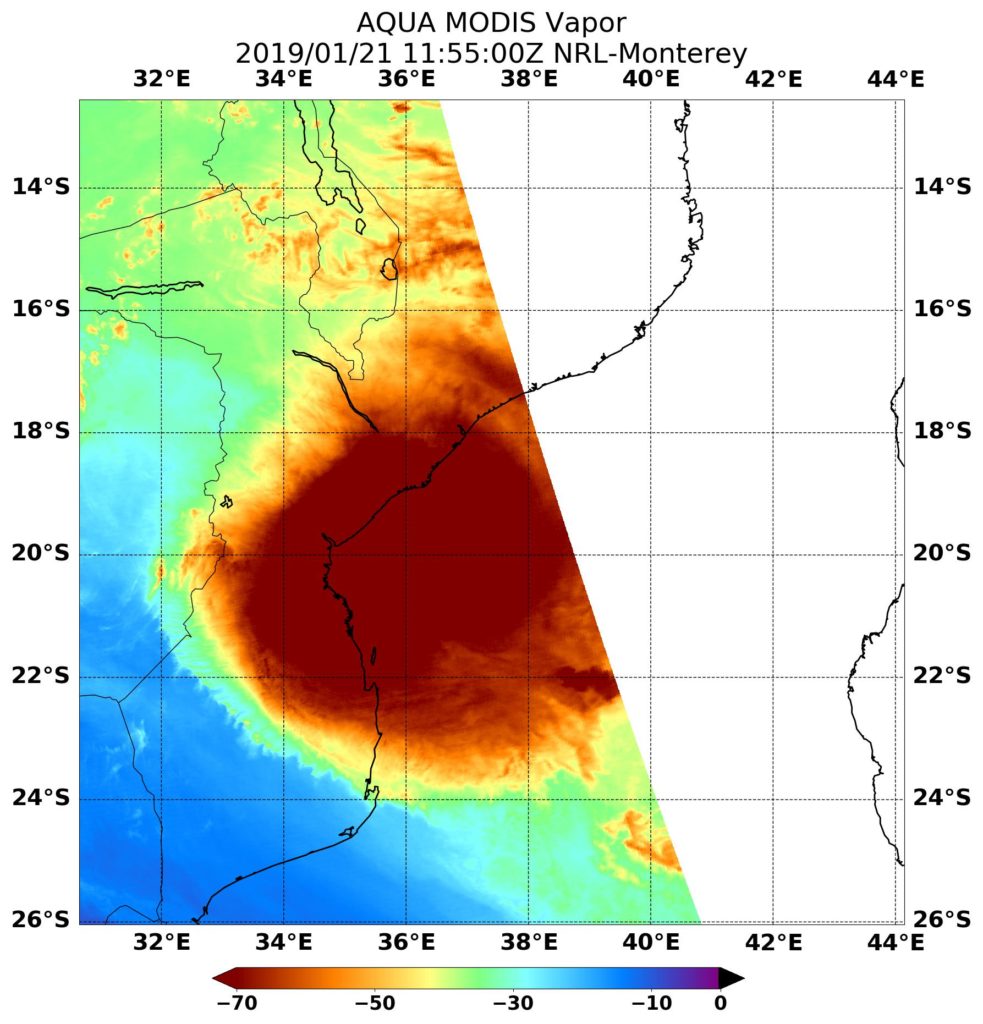Jan. 20 – 21, 2019 – NASA Analyzes Water Vapor in Tropical Storm Desmond Near Mozambique
NASA’s Aqua satellite provided a look at the water vapor content within Tropical Storm Desmond as it was approaching landfall in Mozambique from the Mozambique Channel.

Tropical Cyclone Desmond formed in the Southern Indian Ocean on January 20, 2019 as Tropical Depression 10S. It strengthened into a tropical storm later that day.
On January 21 at 4 a.m. EST (0900 UTC) Tropical cyclone Desmond was located near 20.1 degrees south latitude and 38.1 degrees east longitude, about 172 miles northwest of Europa Island. It was moving to the north-northwest and had maximum sustained winds near 35 knots (40 mph/65 kph). Desmond is moving toward Mozambique.
On Jan. 21 at 6:55 a.m. EST (1155 UTC) the MODIS instrument aboard NASA’s Aqua satellite captured imagery of water vapor within Desmond. MODIS saw coldest cloud top temperatures were as cold as minus 70 degrees Fahrenheit (minus 56.6 degrees Celsius) in those areas. Storms with cloud top temperatures that cold have the capability to produce heavy rainfall.
Water vapor analysis of tropical cyclones tells forecasters how much potential a storm has to develop. Water vapor releases latent heat as it condenses into liquid. That liquid becomes clouds and thunderstorms that make up a tropical cyclone. Temperature is important when trying to understand how strong storms can be. The higher the cloud tops, the colder and the stronger they are.
The image showed that the western side of Desmond was already bringing rain and gusty winds over the coast of Mozambique as it moved toward a landfall.
Desmond moved northwest in the Mozambique Channel and made landfall in central Mozambique on Jan. 21 around 4 p.m. EDT (2100 UTC).
By Rob Gutro
NASA’s Goddard Space Flight Center
